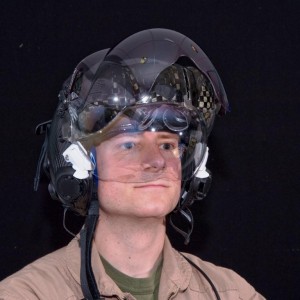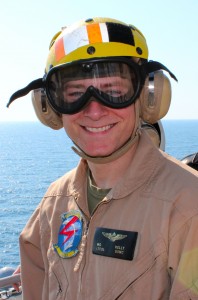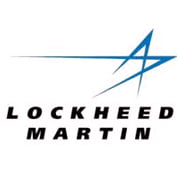Shaping a Paradigm Shift
As described in earlier white papers, the advanced fusion engine enables connected F-35s in battlespace to share the COP.
https://www.sldinfo.com/whitepapers/the-f-35-combat-systems-fusion-engine/
https://www.sldinfo.com/whitepapers/the-f-35-and-advanced-sensor-fusion/
Each plane is synergy enabled.
The shift from radio to a visual COP is a key definer in the shift from legacy aircraft to 5th generation fighters.
20 years ago radio was the tool for pilots to create synergy.
A good flight lead was able to describe battlespace to his wingmen, and that was the key. If you couldn’t describe battlespace and build a picture inside everyone’s mind, then it was difficult to maintain mutual support let alone combat synergy.
Now modern 4th generation fighters employ datalinks which have improved information sharing. Most have some type of datalink, which begins to give them synergy, but it’s not the same as designing a weapon system from the beginning to be synergy enabled.
With the COP (generated by fusion from all of the sensors in my airplane and yours, presented in an easy-to-understand graphical view of battlespace) the pilots can now share common situational awareness.

Every connected F-35 sees the same thing.
The synergy we possess does not depend on the pilot’s ability to mentally fuse and correlate multiple sensors into a picture, and then communicate it verbally. We share the picture automatically which means Blue-4, a brand-new F-35 pilot, sees the same picture that Blue 1 is seeing who has 1,000 hours in the jet.
Not only that, the lead pilot can see what I’m doing and may be able to catch minor mistakes that I’m making, or he can direct me if he sees ways that I’m not using the airplane as we briefed.
It is almost like having an instructor with you all the time. Nobody wants to fly with an instructor full time… except in war. It’s good to have somebody who’s better than you are because the stakes are high.
Fourth generation datalinks are important and nobody would give them up, but they are not typically well integrated into the weapon system. They are an add-on, much like a new sensor or new pod and must be managed and correlated which can cause information overload.
The COP gives us a visual vice verbal approach to generating synergy.
It’s synergy in a picture rather than words.
Of course, looking at the COP for a pilot with 1,000 hours of experience is going to be different than a newbie on his or her first mission. You can’t teach judgment and experience, but we can begin to bring the valleys of inexperience up quickly and in such a matter that we have a positive effect on lethality and survivability.
The focus is on time – which is a precious commodity in tactical employment.
Rather than pilots spending time constructing a mental picture of the battlespace, the F-35 constructs this picture for them and presents it graphically.
Remember the core philosophy: return the pilot to the role of tactician by managing workload and providing situational awareness that leads to information dominance.
One great way to do this is by returning time to the pilot. This is time needed to evaluate the battlespace and to be a tactician.
The COP approach is symmetrical with the generational transition. The visual world is where the next generation of fighter pilots will live and operate.
The next generation LIVES in a graphical world, and they tend to process tasks graphically.
Legacy 4th generation aircraft were forged in the MS-DOS world, which was textual rather than graphical. Apple came on the scene and caused a paradigm shift. The shift was to interacting with technology through graphics.
That same shift has finally made it to the tactical cockpit.
The generation to which we’re referring is the millennials. We built the F-35 weapon system for them, and we’ve had to remind ourselves that we are not building the F-35 for current 4th generation pilots. We’re building it for the future ones.
“I admit the paradigm shift in the cockpit is challenging with an HMD in lieu of a HUD, voice control, touch, and the PCD. We introduced risk into the cockpit, but it will pay huge dividends in lethality and survivability for the next generation of pilots.” says Michael Skaff, principal engineer for the F-35’s pilot vehicle interface.
If we’re going to defeat the enemy, then we have got to cycle through our Observe-Orient-Decide-Act (OODA) loop faster and better at every level, including the graphical level.
We built a fighter, which is targeted toward a new generation of pilots. The men and women who are in their first year at the academies right now will probably hit the fighter pipeline just about right to be the first Lightning II pilots right out of flight school. These folks are millennials.

Between F-35s we build synergy, which is greater than the sum of the parts.
The synergy extends to sensor control. This means that in your cockpit you can actually use my sensors. You don’t really take control of my radar or my EW, but as you interact graphically with your display my sensor suite may get tasked to help with your solution.
The COP has impacts on the flight debriefing and the entire learning process as well.
The COP has merit beyond real time use. It has value before the mission. Before we fly into battlespace I would like the benefit of someone who was just there. In the past this was done verbally. F-35 pilots just returning from a mission have the most recent and relevant view of battlespace. I would like to speak with them about what they encountered and better yet… I’d like to see the COP from the target area.
We aren’t quite there, but in the near future, the airplanes that took off this morning and flew through the battlespace and gathered essential elements of information will come back with a digital representation of what they encountered. Then, we’ll download that information into my jet prior to takeoff. This means as we mission plan, we won’t start from a blank slate. We’ll start from their slate.
The COP and the fusion “engine” set in motion a whole new combat learning process.
There are datalinks on 4th generation fighters such as Link 16 and others; and to some degree Airborne Warning and Control System (AWACS) can put a picture into an F-16. That’s helpful, and it’s worth having.
But, the problem with this approach is twofold: the link waveform is observable and it’s not well integrated into the sensor suite. The first issue means the enemy may be able to detect the datalink and track the users and ultimately target them. The second issue, although contributing to situation awareness, greatly increases workload. Fourth generation datalinks do not get us to information dominance.
We need a private data link, which is fully integrated into the advanced fusion architecture. This is Multifunctional Advanced Datalink (MADL) on the F-35.
Advanced fusion and a private datalink are the key enablers.
We are seeing the evolution from voice, to datalink, to a private data link, which is fully integrated into the weapon system.
We also recognize that we need to put more and more of our assets on this private data link. MADL has a bright future.


